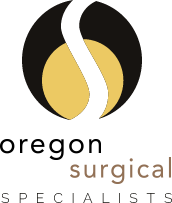GENERAL SURGERY
Gastrointestinal Surgery
Hemorrhoids
Hemorrhoids are rectal veins that become swollen and dilated because of increased pressure upon them, usually due to straining during a bowel movement. About half of the population have hemorrhoids by age 50. They are also common in women during and immediately after pregnancy because of increased pressure in the abdomen. Diarrhea may also cause them to flare up.
Although hemorrhoids may be irritating, they are usually not life-threatening. In many cases, hemorrhoids can be managed with lifestyle changes such as increasing your daily intake of fiber and drinking more water.
Hemorrhoids can be internal or external
Internal hemorrhoids originate above the anal sphincter muscle, which is the muscle at the end of your rectum that opens when you have a bowel movement. The symptoms of internal hemorrhoids include:
- Bright red blood from your rectum
- A discharge of mucus
- Rectal fullness or discomfort
- Rectal pain, especially if they become incarcerated (that means their blood supply is cut off) or prolapsed (protrude through the anus)
External hemorrhoids occur in veins below the anal sphincter muscle. Symptoms of external hemorrhoids include:
- Bleeding
- Itching
- Severe pain – usually a signal that a clot has formed in an external hemorrhoid, causing a “thrombosed” hemorrhoid
Diagnosis
External hemorrhoids are usually diagnosed by your doctor during a physical examination because they are visible from the outside. Internal hemorrhoids may require a digital rectal exam, or the doctor may use an anoscope, which is a short hollow tube that is lubricated and placed a few inches into the rectum. Anoscopy is a quick procedure that can be done in the doctor’s office without special preparation.
A colonoscopy or barium enema followed by an x-ray may be necessary to evaluate for other serious medical conditions including inflammatory bowel disease, diverticulosis, adenomatous polyps, and colon cancer.
Alternative Treatment
When hemorrhoids flare up, you can make changes in your lifestyle that are usually effective in decreasing your pain and swelling. These changes include:
- Increasing your fiber intake by eating more fruits, vegetables, and whole grains
- Taking a fiber supplement such as Metamucil, Citrucel, or flax seed (milled) fiber (20-30 gms/day)
- Drinking plenty of water: try for 8 glasses per day
- Exercising daily
- Reducing the amount of time you spend on the toilet
- Sitting in a sitz bath (a basin of warm water) for 10 minutes at least twice a day and/or after a bowel movement, and applying a topical hemorrhoid cream to the area
Surgical Treatment
In more advanced cases, surgical treatment may be required to improve symptoms. There are several techniques; your doctor will help you determine the best option.
Elastic Band Ligation: This procedure involves placing an elastic band tightly around the base of the hemorrhoid. The band reduces blood flow to the hemorrhoid. After 7 to 10 days, the tissue falls away and is replaced by scar tissue, which prevents recurrence. This is a simple procedure that may be done without anesthesia.
Injection Sclerotherapy: Sclerotherapy is used for bleeding hemorrhoids. A sclerosing agent is injected into the hemorrhoid, initially causing inflammation. The inflammation leads to development of scar tissue, which prevents recurrence of the hemorrhoid.
Excisional Hemorrhoidectomy: This surgical procedure is done in the operating room under general anesthesia. It is usually reserved for large internal hemorrhoids that do not respond to ligation or sclerotherapy. During the procedure, the hemorrhoid and the vascular tissue that supplies it with blood are cut and removed from the anus. Although effective, it is a painful operation. Possible complications include bleeding, fecal impaction (stool that will not pass through the anus), and urinary retention.
